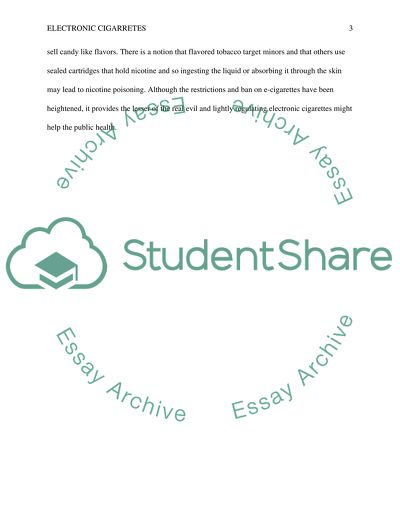Cite this document
(“Electronic Cigarettes Essay Example | Topics and Well Written Essays - 4250 words”, n.d.)
Electronic Cigarettes Essay Example | Topics and Well Written Essays - 4250 words. Retrieved from https://studentshare.org/health-sciences-medicine/1645627-electronic-cigarettes
Electronic Cigarettes Essay Example | Topics and Well Written Essays - 4250 words. Retrieved from https://studentshare.org/health-sciences-medicine/1645627-electronic-cigarettes
(Electronic Cigarettes Essay Example | Topics and Well Written Essays - 4250 Words)
Electronic Cigarettes Essay Example | Topics and Well Written Essays - 4250 Words. https://studentshare.org/health-sciences-medicine/1645627-electronic-cigarettes.
Electronic Cigarettes Essay Example | Topics and Well Written Essays - 4250 Words. https://studentshare.org/health-sciences-medicine/1645627-electronic-cigarettes.
“Electronic Cigarettes Essay Example | Topics and Well Written Essays - 4250 Words”, n.d. https://studentshare.org/health-sciences-medicine/1645627-electronic-cigarettes.


